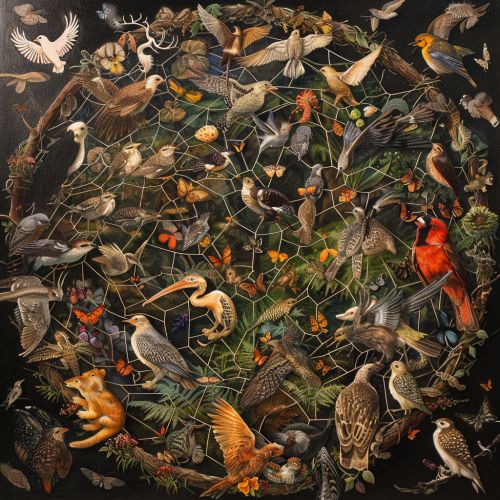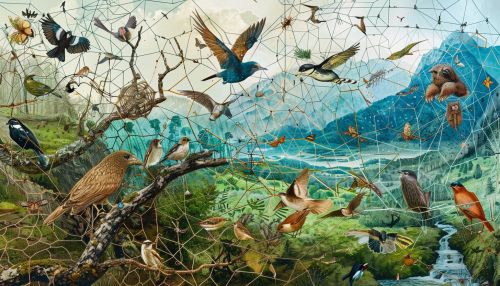Food Webs
Introduction
A food web is a complex network of feeding relationships among various species within an ecosystem. It is a more realistic and intricate representation of energy flow in an ecosystem compared to a food chain, as it takes into account the multitude of feeding interactions between different species.


Structure of Food Webs
Food webs are structured into different trophic levels. The first trophic level consists of primary producers, also known as autotrophs. These organisms, primarily photosynthetic plants and algae, are capable of converting sunlight into usable energy through the process of photosynthesis.
The second trophic level is made up of herbivores, also known as primary consumers, who feed on primary producers. The third trophic level consists of carnivores, or secondary consumers, who feed on primary consumers. Tertiary consumers, who feed on secondary consumers, make up the fourth trophic level.
At the top of the food web are apex predators, who have no natural predators. Decomposers, such as bacteria and fungi, break down dead organisms and waste materials, recycling nutrients back into the ecosystem.
Dynamics of Food Webs
Food webs are dynamic and complex systems that are influenced by various factors. Changes in the population of a species can have cascading effects throughout the food web, a phenomenon known as a trophic cascade. For instance, a decrease in the population of a predator can lead to an increase in the population of its prey, which can then affect the population of the prey's food source.
Species extinctions can also have significant impacts on food webs. The loss of a species can disrupt the balance of the ecosystem, leading to changes in the populations of other species and potentially causing additional extinctions.
Mathematical Models of Food Webs
Scientists use mathematical models to study food webs and predict how they will respond to changes. These models can be simple, focusing on a few species and their interactions, or complex, incorporating many species and various factors such as predation, competition, and environmental changes.
One common type of model is the Lotka-Volterra model, which describes the dynamics of predator-prey interactions. Another type of model, known as a network model, represents the food web as a network of nodes (species) and edges (feeding relationships).
Role in Ecosystem Services
Food webs play a crucial role in maintaining ecosystem services, which are the benefits that humans derive from ecosystems. For example, food webs help to regulate populations of pests and disease vectors, contribute to nutrient cycling and soil fertility, and support the production of food, fiber, and fuel.
Understanding food webs is therefore essential for managing ecosystems and ensuring the sustainability of ecosystem services. This is particularly important in the context of climate change, as changes in temperature and precipitation patterns can have profound effects on food webs and the services they provide.
